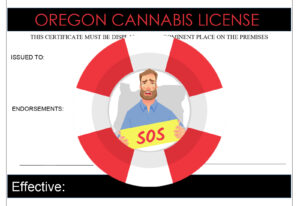Welcome to Part 4 in our series on New York’s Cannabis Retail Dispensary Regulations. For prior posts in this series, check out the following:
- New York’s Cannabis Retail Dispensary Guidelines are Here!
- New York’s Cannabis Retail Dispensary Guidelines, Part 1: Dispensary Operations
- New York’s Cannabis Retail Dispensary Guidelines, Part 2: Security and Surveillance
- New York’s Cannabis Retail Dispensary Guidelines, Part 3: Hiring and Training Your Employees
The Regulations
As many readers will recall, on October 28, 2022, the Office of Cannabis Management (OCM) released its “Guidance for Adult-Use Dispensaries” (the “Regulations”). The Regulations are promulgated to provide guidance for Conditional Adult-Use Retails Dispensary (CAURD) licensees and applicants. Today, we wanted to give you a rundown on the how a Licensee’s products and dispensary can be advertised, branded, and packaged in accordance with the Regulations.
The information contained in the Regulations is a mix of substantive requirements, operational guidance, and insight into the OCM’s plans for the issuance of licenses and operation of New York’s cannabis industry. As part of our series explaining and detailing the Regulations, this post is to provide licensees with guidance on the best practices for training employees working at your retail dispensary. Of course, this post cannot go into each and every detail of the Regulations, however, this post should serve as a basis for your knowledge going forward and as usual, we encourage you to review the Regulations and consult with an attorney.
Dispensary name
Licensees may operate under a “doing business as” name, and do not need to operate as X Y Owner LLC. However, licensees cannot misrepresent their business as a medical cannabis dispensary and cannot describe the type of service or class of products sold, including by using the terms “drug”, “medicine”, “doctor”, or “pharmacy.” Additionally, to date, Licensees are also prohibited from representing their business as producing or selling “organic” or “craft” products.
Advertising and branding
The biggest points of emphasis in the Regulations are to prevent sales to those under 21 years old and prevent licensees from advertising their dispensaries as a pharmacy or drug store with products with health benefits. The Regulations specifically provide for certain prohibitions on labeling, packaging, advertising and marketing that would make a dispensary or cannabis attractive to individuals under 21.
Such prohibitions on labeling, packaging, and advertising include, but are not limited to:
- Images of individuals who could reasonably appear to be under 21 years old;
- Cartoons;
- Bubble type or other cartoon-like font;
- Bright neon colors;
- The word or candy or candies;
- Symbols, characters, public figures, toys, or games that are commonly used to market products to individuals under 21 such as cookies, candies, and soda to name a few; and
- Parodies of commonly known food or beverage products like Reefer’s Peanut Butter Cups or the recently seen on the streets of Manhattan – Star Buds with a logo similar to Starbucks.
That last point warrants a comment. Parodies would not only present an issue for the OCM, but could also expose licensees to trademark infringement lawsuits due to the likelihood of confusion, and dilution or tarnishment of their product.
Licensees are also prohibited from advertising any health claims about their dispensary and/or products. This prohibition covers any claim made on the retail package or in the marketing or advertising of a cannabis product — expressly or by implication, including written statements, symbols, or branding — that characterizes the relationship of any cannabis product to a disease or health-related condition or symptom.
Lastly, licensees must ensure that no cannabis products are displayed in an area that is visible from outside the dispensary; and that no advertisement can be seen from a school ground, childcare center, playground, public park, or library (unless it is a permitted outdoor sign). It is not clear how the OCM will determine “visibility” or how licensees can measure such visibility. Will the OCM send a representative out to the dispensary? And walk to the nearest location as described above, to see if they can read the sign or will it be measured by distance? These are open questions without guidance.
























